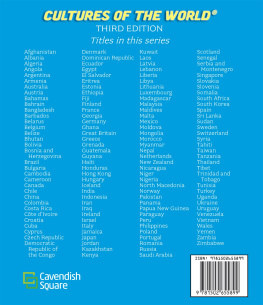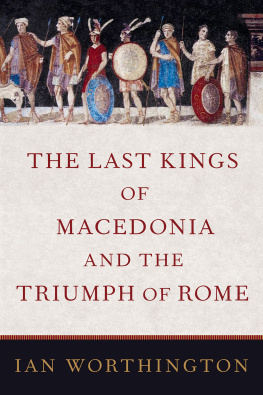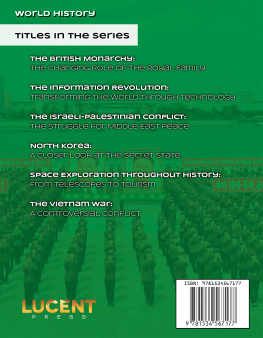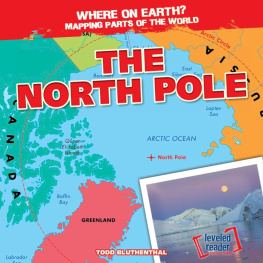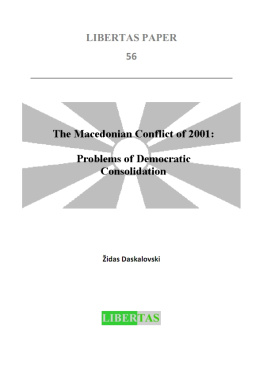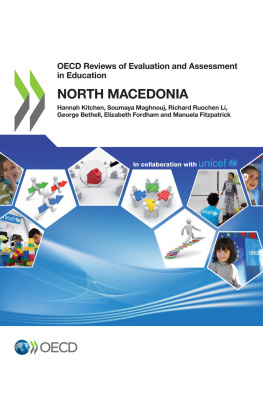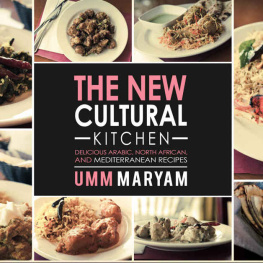
Published in 2021 by Cavendish Square Publishing, LLC
243 5th Avenue, Suite 136, New York, NY 10016
Copyright 2021 by Cavendish Square Publishing, LLC
Third Edition
No part of this publication may be reproduced, stored in a retrieval system, or transmitted in any form or by any meanselectronic, mechanical, photocopying, recording, or otherwisewithout the prior permission of the copyright owner. Request for permission should be addressed to Permissions, Cavendish Square Publishing, 243 5th Avenue, Suite 136, New York, NY 10016. Tel (877) 980-4450; fax (877) 980-4454.
Website: cavendishsq.com
This publication represents the opinions and views of the author based on his or her personal experience, knowledge, and research. The information in this book serves as a general guide only. The author and publisher have used their best efforts in preparing this book and disclaim liability rising directly or indirectly from the use and application of this book.
All websites were available and accurate when this book was sent to press.
Library of Congress Cataloging-in-Publication Data
Names: Knowlton, Mary Lee, 1946- author. | Nevins, Debbie, author.
Title: North Macedonia / Mary L. Knowlton, Debbie Nevins.
Description: Third edition. | New York: Cavendish Square Publishing, 2021.
| Series: Cultures of the world | Includes bibliographical references and index.
Identifiers: LCCN 2019049690 (print) | LCCN 2019049691 (ebook) | ISBN
9781502655899 (library binding) | ISBN 9781502655905 (ebook)
Subjects: LCSH: North Macedonia--Juvenile literature.
Classification: LCC DR2160 .K6 2021 (print) | LCC DR2160 (ebook) | DDC
949.76--dc23
LC record available at https://lccn.loc.gov/2019049690
LC ebook record available at https://lccn.loc.gov/2019049691
Editor, third edition: Debbie Nevins
Designer, third edition: Jessica Nevins
The photographs in this book are used with the permission of: Cover Hriana/
Some of the images in this book illustrate individuals who are models. The depictions do not imply actual situations or events.
CPSIA compliance information: Batch #CS20CSQ: For further information contact Cavendish Square Publishing LLC, New York, New York, at 1-877-980-4450.
Printed in the United States of America



N ORTH MACEDONIA IS A NEW NAME FOR AN OLD PLACE. IT HAS had a number of different names over the centuries. How does a country change its name? In this most recent case, after years of discussionsome would say bickeringwhat was once the Republic of Macedonia passed a constitutional amendment and, beginning in 2019, became the Republic of North Macedonia.
Why does a country change its name? Thats a longer story, and its told in the History and Government chapters of this book. Spoiler alert: It has much to do with ancient history, national identity, an unhappy neighbor, and a dream for the future.
North Macedonia is not one of those countries that gets much coverage in the American press. In fact, many Americans would probably have trouble finding it on a map, if theyve heard of it at all. North Macedonia may be relatively small, but as a civilization it has been around, in one form or another, almost forever. Skopje (SKOH-pee-ah), its capital, is at least 6,000 years old.
The country is located in southeastern Europe, in a region called the Balkans. The Balkan Peninsula extends to the south of continental Europe, bounded to the west by the Adriatic Sea, to the south by the Ionian and Aegean Seas, and to the east by the Black Sea. The region itself is surrounded by water on three sides, as peninsulas are, but for all those seas, North Macedonia has no coast at all. Its a landlocked country located more or less in the center of the great peninsular landmass, where its surrounded by less-than-friendly neighbors. It is relatively small, though not tinyabout the size of Vermont or New Hampshireand is a sort of rounded nugget shape. A map of North Macedonia would be much easier to draw than, say, a map of its neighbor to the south, Greece, with its highly irregular coastline and its thousands of islands.

This map of North Macedonia shows its important cities, rivers, lakes, and borders with surrounding countries.
Greece, for its part, has been a thorn in the side of its northern neighbor ever since what was then called simply Macedonia first proclaimed independence in 1991. That story is told later in these pages as well. Essentially, the problem between them all comes down to the question, Will the real Macedonia please stand up? Its a question that found both Greece and Macedonia standing up, nose to nose, fists up, and ready to battle it out.
North Macedonia, therefore, might be said to have an identity problem. This is hinted at in the great name change of 2019, but it involves more than just a label. History has defined the place and its people in many ways, but today, North Macedonia struggles to figure out just what kind of country it is and what it wants to be.
Is it the great homeland of the ethnic Macedonian people, with legendary, even mythological, ties to the ancient Kingdom of Macedon and its exalted hero, Alexander the Great? Is it a modern, multiethnic, multilingual nation of Christians and Muslims who somehow find unity under the North Macedonian flag? Is it a former communist country that should now look to Russia and the East for its political, economic, and cultural guidance, or is it a European country that awaits the embrace of the Western European community at large?

The yellow area roughly describes the geographical region called Macedonia.

Pope Francis celebrates a Roman Catholic mass outdoors in Skopjes Macedonia Square during his May 2019 visit to North Macedonia.
When Pope Francis, head of the Roman Catholic Church, visited North Macedonia in May 2019, he called attention to the question of identity. He praised North Macedonia as a bridge between the East and West. That is very much the case, but a bridge is a tough thing to be. It is neither here nor there, and with too heavy a burden, a bridge can collapse.
Pope Franciss visitthe first ever by a popeepitomized the same idea. The Catholic Church itself is divided into East and West, a schism that has lasted a thousand years. North Macedonia is an Eastern Orthodox Catholic country; there are very few Roman Catholics (the Western branch of the Church). However, the country is nonetheless the homeland of one of the worlds most beloved contemporary Roman Catholicsthe woman known as Mother Teresa, who was born in Skopje in 1910. She died in 1997, and Pope Francis himself canonized her (designated her a saint) in 2016. In a further expression of the countrys ethnic complexity, she was also Albanian. Ethnic Albanians are the largest ethnic minority in North Macedoniaan aggrieved minority at thatand most of them, unlike Teresa, are Muslim.

